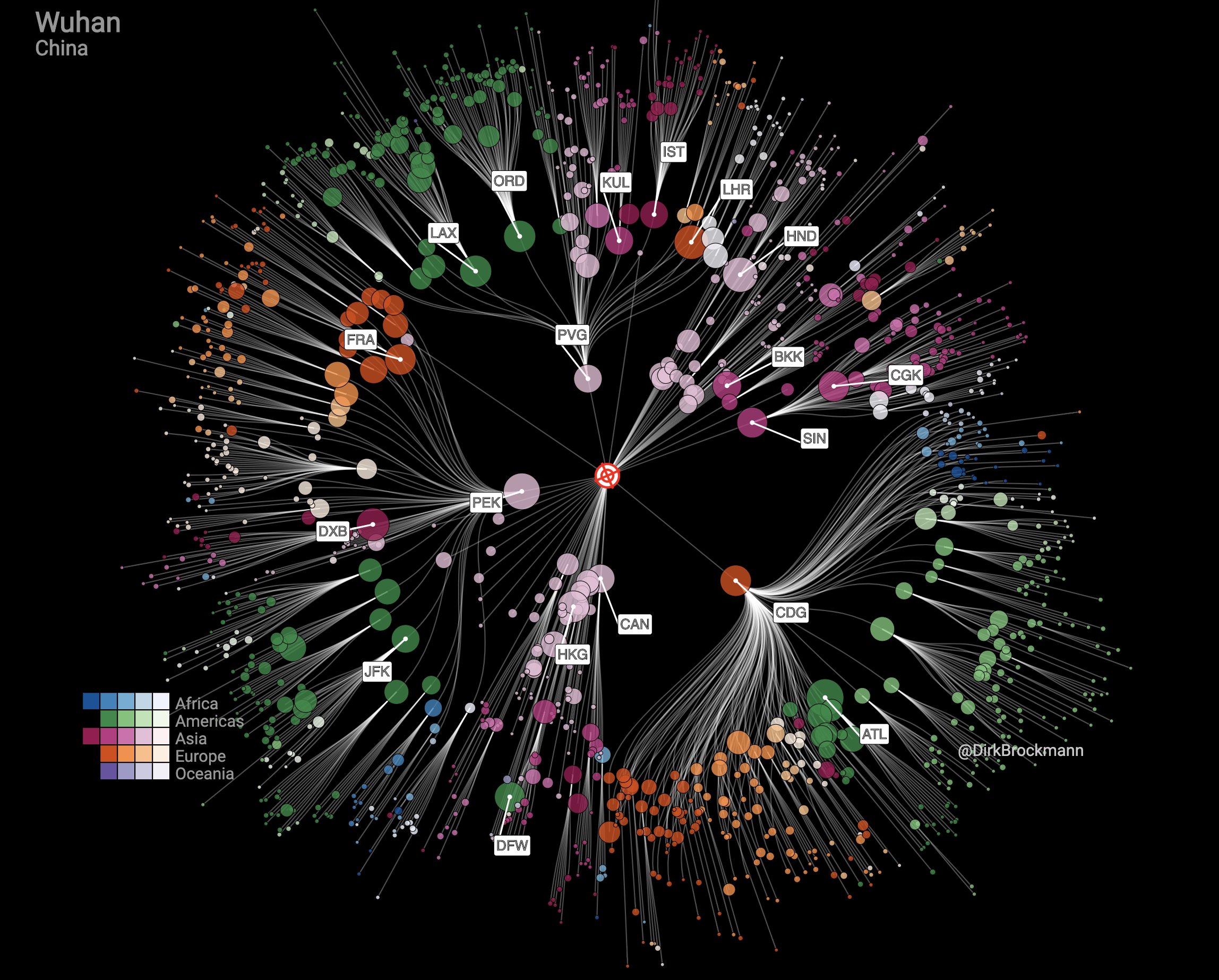If the Coronavirus COVID-19 (SARS-CoV-2) would be a musician, it would be the ultimate rock star. Everybody wants to know where the next “gig” will happen. But unfortunately not to attend the party but to avoid it.
We’ll have a look at it from a mobility perspective, i.e. how mobility supports the virus and what we all can do to reduce the infection risk.

Spreading the Virus
Mobility and especially air travel is great! It connects people across nations and cultures and widens our horizon. But air travel also has its downsides: it is currently the fastest growing source of greenhouse emissions – and it can spread diseases globally incredibly fast.

In the 14th century there was a much worse disease spreading across the occident: the “Black Death” (plague). It was highly contagious and had a crazy 95% mortality rate, not at all comparable to the max. 2.5% currently in discussion for COVID-19, which looks more like a bit tougher version of the common flu and justifies no reason to panic. The Black Death pandemic took almost five years to spread across Europe. This time the virus was much smarter and took planes to spread. This reduced the so called Effective Distances by large. As a consequence the virus reached all continents and more than 50 countries in less than three months. What also helped the virus to be that successful was its ability to hide in an infected and already contagious patient but not showing any symptoms. Well done Corona!

(C) Courtesy of Prof. Dr. Dirk Brockmann, @DirkBrockmann
Now some airline connections to heavily affected areas have been paused and entire cities have been quarantined in order to slow the spread – and more travel restrictions will follow. It will help. And will also be an enforced experience of restraint from travel. As a side effect his will give us a break to rethink if we really not to travel that much. Could it lead to a turning point in long distance travel and could it lead to a massive reduction in greenhouse emissions? Can’t we replace many on-site meetings with video conferences and if we have to travel: do it less frequently and stay longer instead? And with up to 80% of air travel being leisure travel, no one would die if we would cut it by half and go on vacation nearby instead. If this would be an aftereffect, at least this would be one positive aspect of the outbreak. In a recent discussion on a a World Economic Forum post on LinkedIn, it was assumed that the the coronavirus has cost less lives than the improved air quality through the virus restrictions has saved – a macabre bottom line win?

Source: World Economic Forum
Protect yourself and others
What if you have to travel or commute to work? How can you protect yourself and protect others if you might unknowingly be infected?
The World Health Organization (WHO) gives clear to advice to the public. in addition to regular hints on how to prevent infections

In addition to this advice, there can be to mobility:
- In all modes of mass transport try to keep distant from co-travelers. If you have the chance to work on flexible hours you can avoid the rush hour.
- In public transport: touch as least surfaces as possible with your hands and if you have to grab a handle wear gloves or at least disinfect your hands right after.
- In shared cars: disinfect all touch areas prior to use, such as the steering wheel, hand brake, gear shift and key.
- In planes: disinfect the armrest, the tray and the safety belt buckle.
- Avoid cash and pay with card or apps instead.
- Take a bicycle in your daily commute to work if you have a chance to do so. Commuting with your own car would also have a lower infection risk than shared public transport – but will likely lead to more congestion and emissions if everybody tries that.
- We might also be able to learn from Chinese companies, on how they are helping people get back to work and school – virtually. Anther win of this crisis could be a boost in the much more effective online learning and a chance to replace the western handshaking with other respectful greeting gestures.
Most effective and serving both safety and the environment: avoid to commute or travel if it is not necessary.
Stay healthy and have a safe trip!

Pingback:The New Normal: Public Transport and the Virus – Mobility as a Service (MaaS)